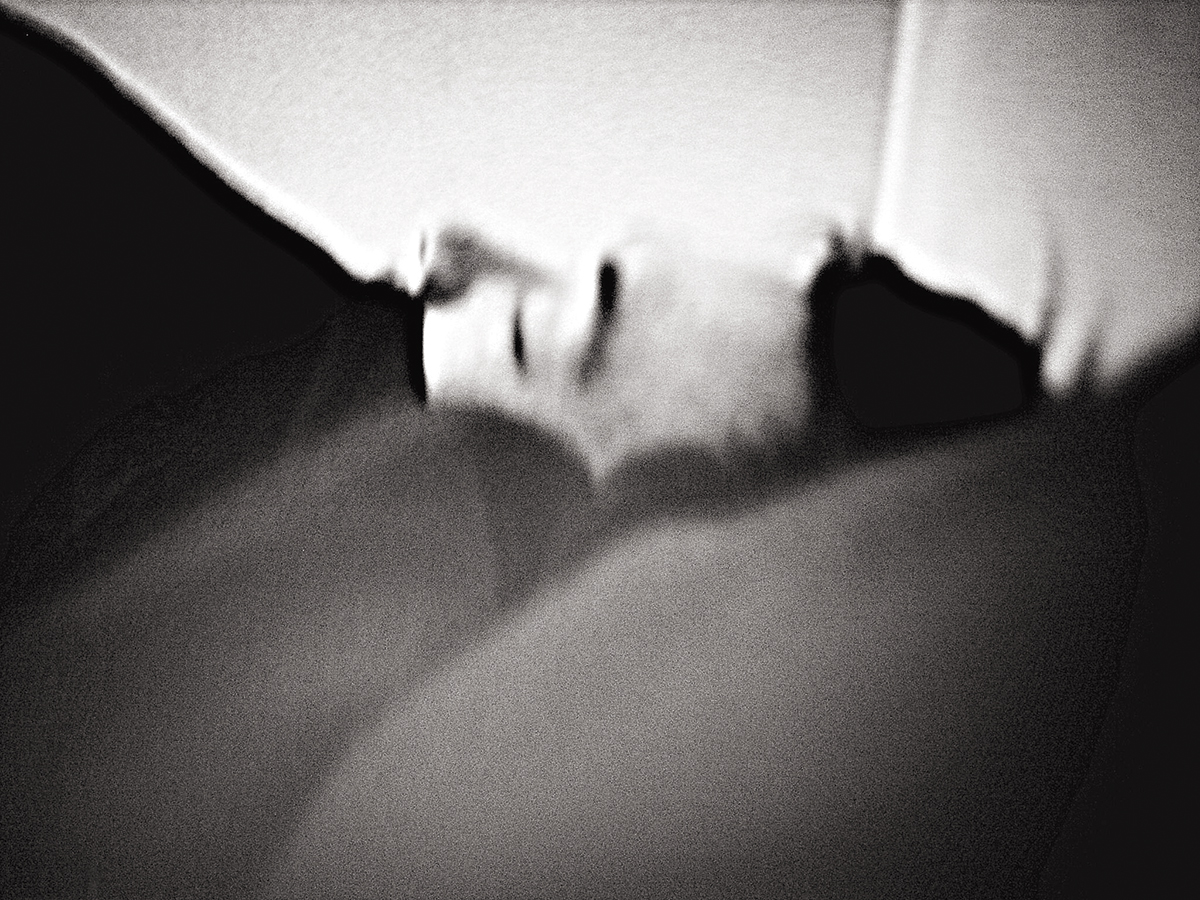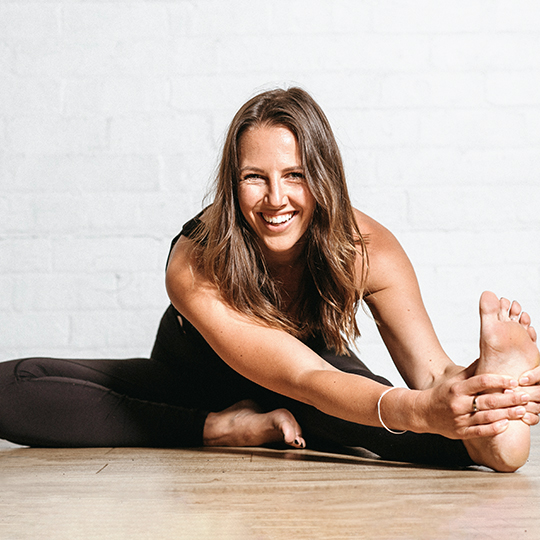Lucidity Without Limit
Dream yoga, says Tenzin Wangyal Rinpoche, is a practice of changing our waking life. He shares the four foundational practices of this powerful mind training. The post Lucidity Without Limit appeared first on Lions Roar.

Dream yoga, says Tenzin Wangyal Rinpoche, is a practice of changing our waking life. He shares the four foundational practices of this powerful mind training.

Photo by Kay Jan / Flickr.
One night, many years ago, I dreamed a snake was in my mouth. I pulled it out and found it was dead. It was quite unpleasant. An ambulance arrived at my house. The paramedics told me the snake was poisonous and that I was dying. I said, “Okay.”
They took me to the hospital. I was afraid and told them I needed to see a statue of Tapihritsa, the Dzogchen master, before I died. The paramedics did not know who he was, but they agreed with my request and told me I would have to wait to die, which relieved me. But then they surprised me by bringing the statue right away. My excuse for delaying death had not worked for very long. So I told them there was no death; this was now my crutch. The minute I said that, I awoke with a rapidly beating heart.
It was New Year’s Eve, and the next day I was to fly to Rome from Houston. Feeling uncomfortable after the dream, I thought perhaps I should take it seriously and cancel my travel plans. I wanted my teacher’s advice. So I went back to sleep and, in a lucid dream, traveled to Lopon in Nepal and told him of the disturbing dream.
At that time, Houston was having a lot of trouble with flooding. My teacher interpreted the dream to mean that I was representing the garuda, the mystical bird who has power over the nagas, the snakelike water spirits. Lopon said the dream meant that the garuda was conquering the water spirits who were causing the flooding. This interpretation made me feel much better. The next day I went to Rome as planned. This is an example of using lucid dream for something practical, for making decisions.
This may all sound strange and unbelievable. The real point is to develop the flexibility of the mind and to pierce the boundaries constricting it. With greater flexibility, we can better accept what arises without being influenced by expectations and desires. Even while we are still limited by grasping and aversion, this kind of spiritual practice will benefit our daily lives. If I am truly living in the realization that there is no death and no one to die, then I will not seek interpretation of a dream as I did in this case, when the dream left me feeling anxious. Our desire for interpretation of a dream is based on hope and fear; we want to know what to avoid and what to promote, we want to obtain understanding in order to change something. When you realize your true nature, you do not need to seek meaning. You are then beyond hope and fear, and the meaning of a dream becomes unimportant; you simply experience fully whatever manifests in the present moment. No dream, then, can cause anxiety.
Dream yoga spans the whole of our lives and applies to all dimensions of experience. This can lead to a sense of conflict between the highest philosophical view and some of the instructions. On the one hand, the view is boundless; the teachings of nonduality and nonconventional reality declare there is nothing to accomplish, that seeking is losing, that effort carries one away from one’s true nature. On the other hand, there are practices and teachings that only make sense in terms of hope and fear. Instruction is given on interpreting dreams, pacifying local guardians, and accomplishing long-life practices, and the student is urged to practice with diligence and guard the focus of the mind. It seems we are being told both that there is nothing to accomplish and that we need to work very hard.
Sometimes this contradiction leads a practitioner into confusion regarding practice. The question arises: “If ultimate reality is empty of distinctions, and if liberation is to be found in the realization of this empty nature, then why should I do practices aimed at relative results?” The answer is simple. Because we live in a dualistic, relative world, we do practices effective in this world. In samsaric existence, dichotomies and polarities have meaning; there is right and wrong and better and worse ways to act and think based on the values of different religions, spiritual schools, philosophical systems, science, and culture. Respect the circumstances in which you are bound. When living in samsara, conventional practices apply, and dream interpretation can be very helpful.
In our conventional lives, we make choices and can change things; that is why we study the teachings, why we practice. As we understand more and become more skilled in our lives, we become more flexible. We begin to really understand the things we are taught: what lucidity is, what is illusory about our experiences, how suffering comes about, what our true nature is. Once we start to see how what we do is a cause of suffering, we can choose to do something different. We grow weary of constricted identities and the repetitive inclinations that lead to so much unnecessary suffering. We let go of negative emotional states, train ourselves to overcome distraction, and abide in pure presence.
It is the same with dreaming. There is a progression in the practice. As the practice is developed, we discover there is another way to dream. Then we move toward the unconventional dream practices in which the story and its interpretations are not important. We work more on the causes of dreams than the dreams themselves. There is no reason not to use dream yoga to attain worldly goals. Some of the practices address relative concerns and lead to the use of dreaming for purposes such as health, divination, guidance, cleansing unhealthy karmic and psychological tendencies, healing, and so on. The path is practical and suited for all. But while the use of dream yoga to benefit us in the relative world is good, it is a provisional use of the practice.
I needed the interpretation of my snake dream because I was afraid of death. It is important for me to know my need was based on fear and that when I abide in nondual presence, there is no fear and I need no interpretation. We use what is useful for the situation in which we find ourselves. When we live only in the nature of mind, the state in which reality truly is void of distinctions, we do not need to do relative practices. There is no need for the interpretation of dream because there is no need to redirect ourselves, there is no egoic self to redirect. We do not need to consult a dream about the future because there is no hope or fear related to the future. We do not need to look to the dream for meaning. We are completely present in whatever arises, without aversion or attraction, because we are living in the truth.
The Four Foundational Practices
Four foundational practices are the roots of dream yoga. Although traditionally called the Four Preparations, they are not of lesser importance, to be followed by the “real” practice. They are the essential practices, the foundation on which success in dream yoga depends.
The daily life of the mind determines the quality of our lives and the quality of our dreams. Change the way you experience your waking life, and you change the experience of dream; the “you” that lives the dreams of waking life is the same “you” that lives the dreams of sleep. If you spend the day distracted, reacting to events and people from unconscious conditioning, then you are likely to do the same in dreams. If you are present and lucid when awake, you will eventually find that lucidity in dreams. It works in the other direction too; change the way you are in dreams, and you change your waking life.
One: Changing the Karmic Traces
The practice is to repeatedly recognize the dreamlike nature of all experience, throughout the day, until the recognition manifests in dreams.
It begins upon waking. Think to yourself, “I am awake in a dream.” Become fully present. Pay attention to the light in the room, sounds, sensations. When you enter the kitchen, recognize it as a dream kitchen. Pour dream milk into dream coffee. “It’s a dream,” you think. Drive a dream car to your dream job. Remind yourself of this frequently throughout the day.
The emphasis should be on you, the dreamer, more than on the objects of your experience. Keep reminding yourself you are dreaming up your experience: the irritation you feel, the happiness, the fatigue, the anxiety, the plans, the ruminations—all are part of the dream. The tree you appreciate, the people you meet, the places you visit—all part of the dream. You are creating a new habit of mind, new karma. It becomes part of your day to frequently, even if only for a moment, become intensely present and aware, to become lucid, dropping the stories being told in your mind and instead resting in vivid awareness.
When we think of experience as “only a dream,” it loses power over us—power it only had because we gave it power. As we view life differently, we change our reaction to it. We can cut through our reactive conditioning. Our dreaming changes. But it’s not just change in the dreams of the night. We begin to encounter all experience with greater calm and increased clarity. As the practice deepens, life becomes increasingly vivid, and appreciation and joy arise. Situations that were disturbing before are now seen as opportunities to practice. ä
ä When we say waking life, too, is a dream, it doesn’t mean we can suddenly fly or transform into a lion. Instead, it’s the realization that the entirety of experience takes place in the mind and that how we make meaning of an experience and react to it is due to our conditioning. This is one articulation of the realization that all phenomena are empty, that the apparent self-nature of beings and objects is illusory. There is not an actual “thing” anywhere in waking life—just as in a dream—but only transient appearances arising, changing, and dissolving. We are necessarily present when this realization comes, as it is then true that there is no place else to be. There is no stronger method of bringing consistent lucidity to dream than by abiding continuously in lucid presence during the day.
An important part of this practice is to experience yourself as a dream. Imagine yourself as a dream figure. Imagine your personality and various identities as constructions of mind. Maintain vivid presence, the same lucidity you are trying to cultivate in dreams, while sensing yourself as insubstantial and transient, made of light. This creates a very different relationship with yourself—one that is comfortable, flexible, and expansive.
It’s not enough to simply repeat again and again that you are in a dream. Feel it. Is it true? Look, touch, smell, taste, listen. Is it a dream? Open your senses, as if this is your first moment of being in this world. When practiced correctly, each time you think you are in a dream, presence becomes stronger and experience brighter and more vivid. If there is not an immediate qualitative change in experience, check to make sure your practice isn’t only the mechanical repetition of a phrase. There is no magic in just thinking a formula. When practicing the recognition, “wake” yourself—by increasing clarity and presence—again and again until just remembering the thought “This is a dream” opens the moment, quieting the moving mind if only for seconds.
There is an important warning regarding this practice. You must respect the logic, limitations, and responsibilities of conventional life. When you tell yourself waking life is a dream, this is true; but if you leap from a building, you will fall, not fly. If you quit work, bills will go unpaid. Plunge your hand in fire and it will be burned. It’s of the utmost importance to remain grounded in the realities of the ordinary world, and it is a necessary part of the practice. As long as there is a “me” and an “other,” there is a world in which we live and to which we are responsible. We are surrounded by suffering beings who benefit from our compassionate responses and who are harmed if we react without care or disregard their suffering as “only dream.” Our decisions and actions have consequences. It’s important to develop both the wisdom of seeing the empty, dreamlike nature of things and the compassion to respond to all that arises with generosity, kindness, and goodwill.
This is the first preparation: to recognize the dreamlike quality of life by developing the practice of lucid awareness. It is to be applied in the moment of perception, before a reaction arises. It is a potent practice in itself. Remain in this awareness and you will experience lucidity both while awake and during dreams. Lucidity in waking life and lucidity in dream are the same.
Two: Removing Grasping and Aversion
The second foundational practice works to decrease grasping and aversion.
The first foundational practice is applied in the immediate moment of encountering phenomena and before a reaction occurs. The second practice is engaged after a reaction has arisen. They are essentially the same practice, distinguished only by the situation in which they are applied and the object of attention. The first practice directs lucid awareness to the recognition of all phenomena of experience as dream. The second foundation specifically directs the same lucid awareness to emotionally shaded reactions that occur in response to the elements of experience.
Ideally the practice should be applied as soon as any grasping or aversion arises in response to an object or a situation. The grasping mind may manifest its reaction as desire, anger, jealousy, pride, envy, grief, despair, joy, anxiety, depression, fear, boredom, or any other emotion, whether intense or very subtle. This is in contrast to most reactions to phenomena, which are neutral.
When a reaction arises, become aware. Remind yourself that you, the person or object, and your reaction to the situation are all dream. Think to yourself, “This anger is a dream. This desire is a dream. This indignation/grief/exuberance is a dream.” The truth in this statement becomes clear when you pay attention to the inner processes that produce emotional states: you literally dream them up through a complex interaction of thoughts, images, bodily states, and sensations. Emotional reactivity does not originate “out there” in objects. It arises, is experienced, and dissolves in your mind.
A limitless number of stimuli appear in life to which you may react: attraction may arise at the sight of a beautiful man or woman, anger at a driver cutting in front of you, disgust or sorrow at a ruined environment, anxiety and worry about a situation or person, and on and on. Every situation and reaction should be recognized as a dream. Do not just say, “It’s a dream.” Recognize and feel the dreamlike quality of your inner life. When this assertion is felt, not just thought, the relationship to the situation changes. The emotional grip on the object relaxes. The situation becomes clearer and more spacious. Grasping and aversion are directly recognized as the uncomfortable constrictions they are.
This is a powerful antidote to the state of near obsession generated from negative emotional states. Direct and certain experience of using this practice to untie the knots of negative emotion is the beginning of the deeper practice of lucidity and flexibility leading to freedom. With consistent practice, even strong experience of anger, depression, anxiety, and other states of unhappiness can be released. When they are, they dissolve. Instead of blindly reacting in a situation, you can respond with kindness, respect, and compassion. Each time you succeed, you plant another karmic seed, developing the habit of mind to respond positively to life. It will start to show up in dreams too.
The teachings refer to this particular practice as a method to give up attachments. There are healthy and unhealthy ways to go about this. It does one little good to suppress desires; they are then transformed into internal turmoil or external condemnations and intolerance. It also works against spiritual development to attempt to flee from pain through distraction or by tightening the body to choke off experience. It can be healthy to give up worldly life and become a monk or a nun, or it can be an unhealthy attempt to escape difficult experiences through suppression and avoidance.
Dream yoga cuts attachment by altering the view; we come to see objects and situations as empty, radiant, and transient, like a dream. This diminishes grasping and aversion based on preference and supports equanimity.
Three: Strengthening Intention
The third foundation involves reviewing the day before going to sleep and strengthening the intention to practice during the night.
During the day, you’ve been practicing with vision and action, with experience and reactions to experience. Now, as you prepare for sleep, allow the memories of the day to arise. Was it a wonderful day? Neutral? Terrible?
Whatever comes to mind, recognize it as a dream. The memories most likely to arise are those of experiences that were strong enough to affect the coming dreams. During the day, which experience did you see as dream? Which captured you? The review can be short, seeing the whole of the day as a dream and remembering experiences briefly. Review the day as if you are remembering dreams; memory is very similar to dream.
This is a practice. Try to comprehend how you were caught up in the dreamlike nature of your life and the stories you tell about life. Feel the difference of relating to experience as a dream.
When experience becomes a memory, the memory often includes an emotional flavor. When we remember we may, to some extent, reexperience what we remember. Memories can make us happy, proud, grateful, loving, or nostalgic. Others we experience as painful, annoying, shameful, or frightening. In either case, memories affect us as they arise in consciousness.
By revisiting difficult memories while resting the mind in clear awareness, the memories lose their power to condition us. If we missed the opportunity to recognize the dreamlike nature of experiences during the day, we have another opportunity to do so in the evening review. The key is to remain relaxed in body and mind, and fully present. Recognize the memory as a dream. Simply witness the memory without engaging the story, then let it go.
After the review, develop the strongest intention possible to know directly and vividly, while dreaming, that you are dreaming. The intention is like an arrow directed at lucidity in dream, an arrow your mind follows. The Tibetan phrase we use for generating intention translates as “sending a wish.” We should have that sense here, that we are making prayers and intentions and sending them to our teachers and to the buddhas and deities, promising to try to remain in awareness and asking for help. There are other practices that can be done before falling asleep, but this one is available to all.
Four: Cultivating Memory and Joyful Effort
The fourth foundational practice begins with waking in the morning. It further cultivates strong intention and strengthens the capacity to remember the events of the night.
Begin by reviewing the night. The Tibetan term for this is literally “remembering.” Did you dream? Were you aware of being in a dream? If you dreamed but did not attain lucidity, reflect, “I dreamed but did not recognize the dream as a dream. But it was a dream.” Resolve that next time you enter a dream, you will become aware of its nature while still in the dream.
If you find it difficult to remember dreams, it can be helpful, throughout the day and particularly before sleep, to generate a strong intention to remember dreams. One of the most helpful practices to increase dream recall is to record your dreams as soon as you wake. To make this easier, keep a journal, pen, and small light by your bed. Or use a recorder; most smartphones come with a recording app or you can download one. Keep this ready by your bedside. The very act of preparing the notebook or recorder at night serves to support the intention to recall the dream upon waking. It is not difficult for anyone to remember dreams once the intention to do so is generated and sustained, even over just a few days or weeks. The more dreams you record, the clearer your memory of dreams will become.
If you did have a lucid dream, feel joy. Develop happiness relative to the practice, and resolve to continue to develop lucidity the following night. If you weren’t lucid, don’t be discouraged. Instead, strengthen your determination, and know that the result will come if you continue the practice. Keep building intention, using both successes and failures as occasions to develop stronger intent to accomplish the practice.
Finally, during the morning period, generate a strong intention to remain consistent in practice throughout the day. Pray with your full heart for success. Prayer is like a magical power we all have and forget to use.
This practice merges into the first foundational practice, recognizing all experience as a dream. The practice becomes uninterrupted around the wheel of day and night.
Consistency
The importance of the day practices to the later stages of dream yoga cannot be overstated. They are much more powerful than they may appear to be. They are practices anyone can do. They are more psychologically oriented than many practices and present no difficulty for the practitioner. Simply doing a practice before going to bed may be ineffective, but with consistent practice of the foundational practices during the day, it becomes much easier to attain lucidity in dream and to then go on to other practices.
Often, and throughout the day, become vividly aware of exactly where you are and what you’re experiencing in the moment. Wake up from the dream of distraction. The more often, the better. You don’t need a special place or time—any place is good; any time is good. It only requires seconds for the moment of recognition, though it’s good to increase the time as you are able.
It’s particularly helpful to become aware as you react to situations. There’s an immediate shift in the mind, allowing more flexibility to respond skillfully.
Make it a habit to turn awareness on itself, to try to be aware of awareness. Pay attention to what happens in that moment. Rest in that.
If you don’t have immediate results, even if you practice for a long time before achieving lucidity in dream, don’t be discouraged. Remember other skills it took time to develop, and how different your thoughts and behaviors are now relative to earlier times in your life. There is constant change. Knowing that nothing remains the same, you need not believe that how things manifest now will continue as they are.
The practice of lucidity during the day is as important as attaining lucidity at night. Experiencing the luminous, dreamlike qualities of life allows your experience to grow spacious, lighter, and more vivid. When lucidity is developed in dream and in waking, there is freedom to shape life positively, to finally give up the turmoil of being driven by hope and fear, desire and aversion. You can rest in presence.
Controlling and Respecting Dreams
Some schools of Western psychology believe it is harmful to control dreams, that dreams are a regulatory function of the unconscious or a form of communication between parts of ourselves that should not be disturbed. This view suggests the unconscious exists and that it is a repository of experience and meaning. The unconscious forms the dream and embeds in it meaning that will be either explicit and obvious or latent and in need of interpretation. In this context, the self is often thought to be composed of the unconscious and conscious aspects of the individual, with the dream being the medium of communication between the two. The conscious self then benefits by working with the dream, mining it for the meaning and insight the unconscious has placed in it. Or the benefit may be from the catharsis of the dream, or from the balancing of physiological processes through the dream-making activity.
Understanding emptiness changes our understanding of the dreaming process. These entities—the unconscious, the meaning, the conscious self—exist as separate things only as useful conceptualizations in our minds.
As mentioned earlier, there are two levels of working with dreams. One involves finding meaning in the dream. This is valued in Tibetan culture and in our practices, agreeing with the many Western psychologies that accord value to dreams. In both the East and the West, it is understood that dreams can be a source of creativity, offer solutions to problems, diagnose ills, and so on. In Tibetan culture, we also look to dreams to connect to guardians and for guidance. But the meaning in dreams is not in the dream images. It is being projected onto the dream by the individual examining the dream and then is “read” from the dream. The process is like making meaning from the images that seem to appear in the ink-spot tests used by some psychologists.
It’s easy to think a dream is like a scroll with a secret message written on it in code that, if cracked, anyone could read. But the meaning of the dream will be different from one person to the next and one day to the next; it isn’t fixed. There is no conventional meaning outside of an individual mind; meaning does not exist until someone starts to look for it. This view is not giving in to chaos; there is no chaos or meaninglessness either, these are more concepts.
When using dream as an approach to enlightenment, the meaning in the dream is not of primary importance. Although we value insights we receive from dreams, we recognize there is also dreaming in meaning. Dream yoga uses dream to recognize what is below meaning, the pure base of experience. This is the higher dream practice, concerned with recognizing and realizing the fundament of experience, the unconditioned. When you progress to this point, you are unaffected by whether there is a message in the dream or not.
There is no danger of disrupting something important when we change our dreams. All we disrupt is our ignorance.
Adapted from The Tibetan Yogas of Dream and Sleep: Practices for Awakening, by Tenzin Wangyal Rinpoche © 1998, 2022. This second edition has been revised and updated. Reprinted in arrangement with Shambhala Publications, Inc.

 FrankLin
FrankLin 































